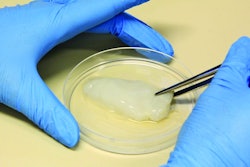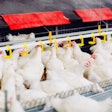
Protecting poultry against avian influenza (AI) could, one day, be as easy as spraying them with a modified bacterium, at least that’s what students in the Netherlands are hoping.
A research project at the University of Groningen has been examining how modifications to a bacterium that naturally occurs in the lungs of poultry could result in a wall of protection and stop the AI from infecting lung tissue.
Having found a paper that described a nanobody that broadly neutralizes highly pathogenic avian influenza the Groningen team sought the authors’ permission to access their genetic construct.
This was then modified inside Escherichia coli before being transferred to Lactobacillus reuteri, a bacterium naturally found within poultry. The modified L. reuteri should secrete the nanobodies which would bind to the virus and neutralize it.
In late September, the university team reported that its laboratory work was almost finished and that it was looking at showing that the nobody would bind to the bird flu virus.
Sprayed in the barn
The modified bacterium could be administered to birds using a standard nebulizer introduced into the poultry shed. Once birds inhale the nebulizer’s aerosol, the modified bacteria would enter the lungs where it would produce and secrete the nanobodies.
The approach could be used to support AI-vaccination through the provision of extra protection within the lungs, but if the manipulated bacteria are able to survive within birds’ lungs, they would continue to produce the nanobodies which would be more like full vaccination, the researchers believe.
An aerosol would certainly be a quick and easy way to protect birds and, as ever more countries consider vaccination, including the world’s major producers with their numerous and large flocks, ease of administration would be highly beneficial, but would it be a good idea to release a genetically modified bacterium into the environment?
To address this concern the university team is also looking at fitting the bacterium with what it calls a kill switch. This could be activated, for example, by temperature. The body temperature of a chicken is 41 C and switch would be activated at temperatures below 40 C.
Should this technology prove to successful and come to market, birds may have to take a deep breath while producers may let out a sigh of relief.

















